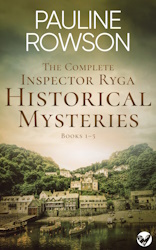
 Children playing in the street, or on a bombsite. They were NEVER supervised by adults. Often a big brother or sister would be in charge. Prams outside the shop.
Children playing in the street, or on a bombsite. They were NEVER supervised by adults. Often a big brother or sister would be in charge. Prams outside the shop.
Open fires, coal dust and soot. Fog and smog.
Few vacumn cleaners. Even fewer refrigerators and hardly any washing machines.
Bread, milk and coal were delivered to your doorstep, with bread unwrapped and left on the window ledge or doorstep.
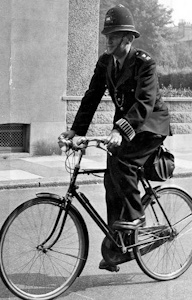 Bobbies on bicycles. Police boxes and telephone exchanges.
Bobbies on bicycles. Police boxes and telephone exchanges.
A knife sharpener came round regularly. Heavy laundry (sheets and towels) were often sent out to the laundry for those who could afford it, otherwise it was boiling on the stove, hand washing and a mangle.
Running hot water was non existent in many homes as were bathrooms. Tin baths in front of the fire once a week sufficed. A privy out the back!
 There were few cars and lorries. There were trams, trolley buses and steam trains (although there were some electric and diesel trains).
There were few cars and lorries. There were trams, trolley buses and steam trains (although there were some electric and diesel trains).
Abortions were illegal, back street practitioners flourished. There was a social stigma attached to illegitimacy, divorce was not acceptable in many circles. Homosexuality was illegal.
Capital punishment was still in operation.
The 1950s then is an interesting and fascinating era to set down my detective, Inspector Alun Ryga.
 DEATH IN THE COVE (1)
DEATH IN THE COVE (1)
1950, Portland Island, Dorset. A dead man is found by former war photographer Eva Paisley in a secluded bay on Portland Island. The victim was stabbed in the neck with a narrow-bladed knife.
Inspector Alun Ryga is called from Scotland Yard to investigate. But no one in the local community seems to know who the victim is.
The man appears to have been a labourer, but he is found dressed in a tailored pinstriped suit, silk underwear, handmade shoes and rare pink-diamond cufflinks. Something about him doesn’t add up . . .
Ryga quickly establishes a good working relationship with Eva Paisley. But the local police warn Ryga not to trust her.
It’s Ryga’s first solo investigation outside of London. He’s keen to prove his worth. But will it cost him his life?
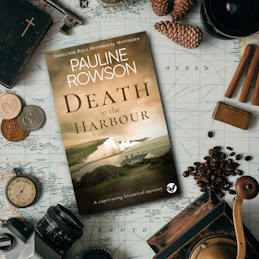 DEATH IN THE HARBOUR (2)
DEATH IN THE HARBOUR (2)
1950, Newhaven, East Sussex.
One foggy November evening, Police Constable George Swinley disappears while working his usual beat.
Four days later, his lifeless body is found floating in Newhaven Harbour.
His death is ruled as an unfortunate accident — it’s assumed he lost his footing in the dark. But his devoted wife Myra thinks otherwise. George knew the harbour like the back of his hand.
Determined to uncover the truth, Myra visits an old friend at Scotland Yard to plead for help. But he doesn’t think there’s much he can do. Then Myra herself goes missing. She never makes it home from London.
Inspector Alun Ryga is sent to the Sussex coast to investigate. But nothing can prepare him for what he’s about to find . . .
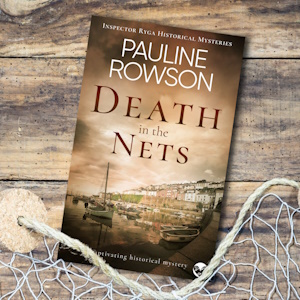 DEATH IN THE NETS (3)
DEATH IN THE NETS (3)
1951, Brixham, Devon.
Inspector Alun Ryga heads to the coast with photographer Eva Paisley. They are staying with Eva’s old friend Anna and her nine-year-old Jean-Claude.
Jean-Claude is convinced he saw a body on the shore ‘all bashed up’ and claims a mermaid took it away. It’s all he’s been talking about for a week!
Intrigued, Ryga asks Jean-Claude to take them to the harbour. And sure enough a man’s body is there, wrapped in nets, with a stab wound to the heart. Jean-Claude was right. But who’s the victim? And what prompted the little boy to come up with the idea of a mermaid?
Ryga begins to investigate, but the discovery of another body throws him into turmoil.Someone is killing to keep their secrets hidden. And with Ryga hot on their heels, he could be next.
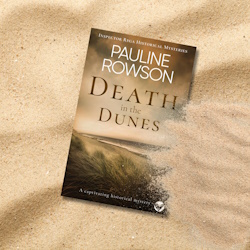 DEATH IN THE DUNES (4)
DEATH IN THE DUNES (4)
It’s a bitterly cold day in March 1951 when Inspector Alun Ryga alights from the train on the Kent coast. Despite its name, Greatstone-on-Sea was far from great — no matter what any holiday poster advertized.
But Ryga’s not here for a holiday. He’s here because Barbara Fennel, a former pilot, has been found dead in the dunes by a local fisherman. The marks around Barbara’s neck suggest she was strangled, but there’s no sign of a murder weapon.
When the fisherman goes missing, he becomes the prime suspect. But nobody knows anything about him, let alone where they can find him.
Meanwhile, Ryga traces Barbara’s steps back to the shabby house she rented in Hythe. He finds is a subminiature camera stuffed in her nightdress case — the kind usually used by spies.
Suddenly Ryga is embroiled in a case filled with secrets and lies. A case where no one is who they say they are, and things aren’t always what they seem . . .
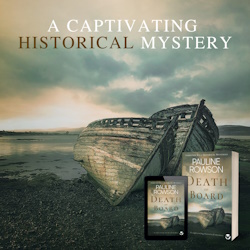 DEATH ON BOARD (5)
DEATH ON BOARD (5)
May 1951.
Inspector Alun Ryga surveys the wreckage of the break in at the elegant Harley Street drawing room, home of retired dermatologist Sir Bernard Crompton, who’s currently sailing his new yacht down the British coast from Scotland — or he was
Sir Bernard is found dead on board his boat off the coast of Cornwall and Ryga is despatched to investigate the circumstances surrounding it, even though the Chief Constable doesn't want him there and the doctor has declared he died of natural causes.
But Sir Bernard had contacts in high places. And there is that break in at his house.
Ryga is puzzled to learn that Crompton was wearing a dinner suit with five rocks in his pocket.
The case takes a deadly turn when another body is found in a nearby cove with a gunshot wound to the face. The victim is also wearing a dinner suit with rocks in his pocket. Is there a past connection between the two men? Why does no one want Ryga to find the killer?
As he doggedly continues, and more disturbing facts come to light, Ryga, haunted by his wartime memories begins to empathise with the community; he struggles to get a grip on the case. Will he fail to solve it? Does it matter if he does?
All his ability, patience and impartiality are put to the test in DEATH ON BOARD. Will he come through it and find the killer?
Available in paperback, on Amazon Kindle, Kindle Unlimited.
Also available as a Boxed Set on Amazon Kindle.
DEATH IN THE COVE and DEATH IN THE HARBOUR are also available as audio books on Audible, and from B7 Media, narrated by Jonathan Rhodes.Subscribe to my monthly newsletter for the latest book news, events, articles and updates
Pauline Rowson lives on the South Coast of England and is the best selling author of many crime novels, published by Joffe Books. Her popular crime novels include the DI Andy Horton Solent Murder Mystery series, the Art Marvik mystery thrillers and the 1950s set Inspector Ryga mysteries. Subscribe to her newsletter for all the latest books news.